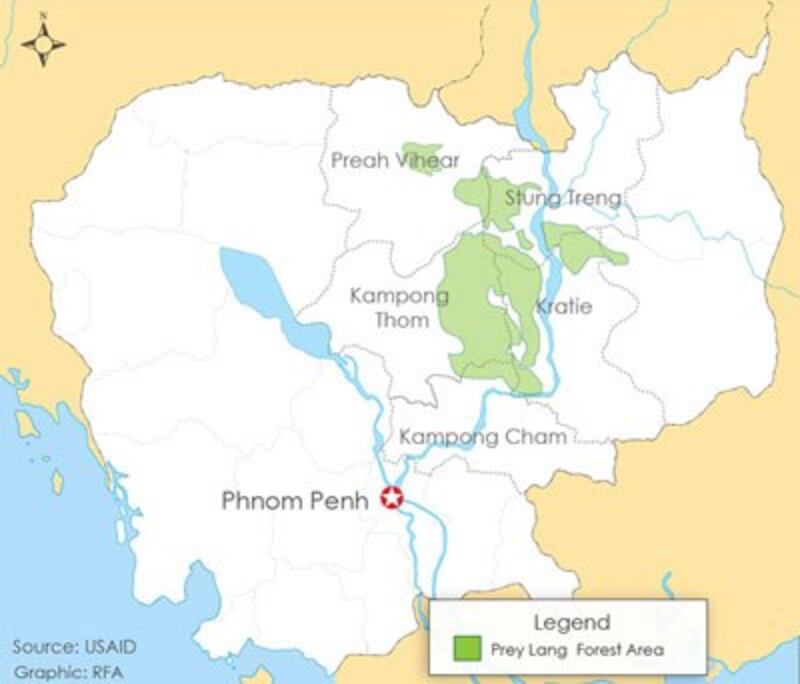Wearing blue and green face paint and calling themselves Cambodia's "Avatars," about 100 villagers staged protests Thursday to highlight what they said is the destruction of one of Southeast Asia’s last intact lowland rainforests.
Police briefly arrested the villagers as they gathered outside the capital Phnom Penh's royal palace for a religious ceremony and distributed leaflets defending the Prey Lang forest covering 3,600 square kilometers (1,400 square miles).
The protesters, joined by monks and environmental activists, wore dress and make-up inspired by the blockbuster movie "Avatar," which depicts the destruction of a forest on an alien world and its inhabitants' bloody fight to protect their home from miners.
Monk representative Loun Savath, who was arrested and later released by the authorities, told RFA that the villagers had gathered to "pray" for the protection of all forests, especially the Prey Lang forest in northern Cambodia.
He said they should not have been arrested.
“We are protecting Cambodian forest. The authorities should not prevent us. We were only distributing leaflets [appealing for forest protection]. The authorities should not be alarmed by that. This is a kind of human rights abuse,” he said.
Survival

Map showing Prey Lang forest area and its surrounding provinces. Graphic: RFA
>>See the slideshow
The villagers said that the Prey Lang forest, which some green groups claim is the region's largest lowland evergreen forest, is critical to the survival of about 200,000 people, concerned about illegal logging and concessions granted for the cultivation of rubber crop and exploitation of minerals.
Most of the wood from Prey Lang is smuggled into China and Vietnam where it is made into furniture and exported worldwide, some environmmental groups have charged.
"Prey Lang forest is the last large primary forest on the Indochinese peninsula and the source of livelihood for around 200,000 people, including a large portion of the country’s indigenous population," said a statement by the Cambodian Center for Human Rights, sent on behalf of the so called Prey Lang Community Network.
It said development around the forest had "accelerated markedly" recently with concessionaires clearing forest areas in order to create rubber plantations.
The forest is richly biodiverse, home to 40 endangered plant and animal species, and a primary watershed regulating water and sediment flow to the Tonle Sap Basin, the statement said.
"The forest is not only essential for the kingdom’s food and water security but, with among the highest carbon sequestration values in the region, is a powerhouse for fighting global warming."
According to the statement, as many as 106 people were briefly detained and questioned by the authorities on Thursday following the protests.
Rice fields
Ka Sros, an indigenous villager from Kratie province, told RFA that the Prey Lang forest "destruction" had affected the livelihood of its inhabitants, especially their rice fields.
“We are praying that Buddha can influence the leaders to think about the forest and the villagers. We are surviving because of the forest," she said.
"Currently the forest is being destroyed. If the forest is destroyed, we don’t have anything left to survive," she said.
Cambodia's Prime Minister Hun Sen said in February that the country's forests must be protected in order to avoid environmental problems.
“We can protect the forest to help reduce climate change,” he was quoted saying by local media reports.
Hun Sen wanted economic land concessions for rubber plantations not to exceed a total of 300,000 hectares, the reports said. At that time, Cambodia had 181,500 hectares of rubber plantations.
Reported by RFA's Khmer service. Translated by Samean Yun. Written in English by Parameswaran Ponnudurai.
